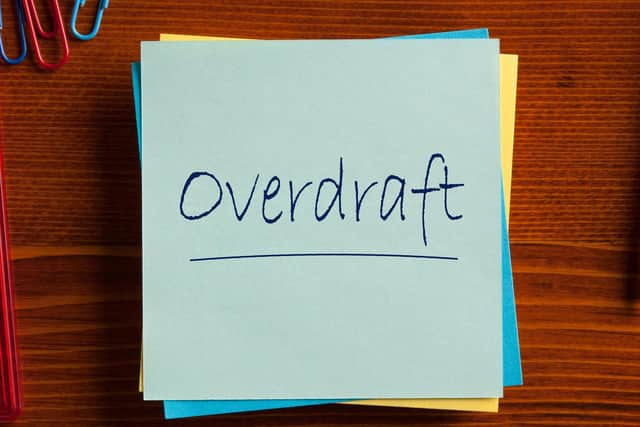How best to avoid sky high overdraft fees and get stuck in a spiral of debt - Sarah Coles
When the question came up on Twitter last week, over a thousand angry people asked how on earth the banks could justify charging 39.9 per cent – or even more – at a time when most of the high street giants are paying 0.01 per cent on easy access savings.
And while thinking about the issue for too long isn’t great for anyone’s blood pressure, it’s worth getting your head around the reasoning, because it can help illuminate the best way for you to borrow for less.
Overdraft rates were hiked after rule changes last April.
Advertisement
Hide AdAdvertisement
Hide Ad

The Financial Conduct Authority was worried about the overdraft market, because the most vulnerable people often relied on unarranged overdrafts, and racked up huge charges: more than 50 per cent of unarranged overdraft fees came from 1.5 per cent of customers.
It decided to spread the pain around more evenly, by banning banks from having different rates for unarranged and arranged overdrafts, and axing the fees.
It said at the time that it would have a ‘waterbed’ effect, where you push down in one area, and costs pop up somewhere else, but it decided it was worth the risk.
As a result, most banks hiked rates on all overdrafts to 39.9 per cent.
Advertisement
Hide AdAdvertisement
Hide Ad

The FCA was unimpressed that they plumped for very similar rates, and said it will keep an eye on the market, but right now, there’s a good chance that’s what your high street bank is charging.
It’s an eye-watering interest rate, and it’s unlikely to fall soon, because the banks say it won’t make up for all the money they used to make from overdrafts.
In 2017, firms made an estimated £2.4bn from them, and the rule changes are expected to cut this by between a quarter and a third.
At a time when low interest rates mean it’s incredibly difficult for the banks to make much of a margin on savings, and competition is pushing rates down for personal loans and mortgages, overdrafts are increasingly important in the profit mix.
Advertisement
Hide AdAdvertisement
Hide AdThe other reason overdraft rates are so high is because of the level of risk the banks are taking: the higher this is, the more money they have to make in order for it to be worthwhile, and overdrafts are the most precarious kind of lending banks offer.
It can help to compare it to a personal loan, where the bank knows how much you’ve borrowed, what you’re going to spend it on, and when you’re due to repay it.
With overdrafts, however, banks know none of these things, and while you have to pass basic credit checks at the outset, the bar is usually much lower than for a personal loan.
Most overdrafts aren’t priced for risk either: most offer a single flat rate, so you’re paying to cover the least reliable current account customers.
Advertisement
Hide AdAdvertisement
Hide AdThese dangers aren’t just theoretical: the banks have had to set aside billions of pounds to cover the possibility that the money will never be paid back.
The key question for us is how much of a risk we pose personally.
If it’s reasonably likely that you won’t be able to pay off your overdraft, then you may struggle to borrow more cheaply elsewhere.
However, in these circumstances, borrowing is not a solution, it’s just building up the size of the problem before you tackle it.
Advertisement
Hide AdAdvertisement
Hide AdIf you can’t bring yourself to face your debt problems alone, talk to a debt charity, who will help you weigh up your options, and find a solution that’ll work much better for you in the end.
If you pose a lower level of risk, then there are far cheaper ways to borrow.
A few banks will offer cheaper overdrafts for people with a better credit rating, including Monzo and Starling, so if you tend to dip in slightly and very occasionally, these might be a better bet.
If you use your overdraft more than this, it’s worth considering a personal loan or a credit card with an introductory interest-free period – as long as you have a sensible plan for paying it off before you’re charged interest.
Advertisement
Hide AdAdvertisement
Hide AdThe best approach of all is to look at why you’re running up debts, and consider changes in your spending to keep within your budget.
In many cases this is far easier said than done – especially if you’ve already cut back during the crisis.
However, facing up to it is far better than burying your head in the sand, running up a huge overdraft, and paying a small fortune in interest.